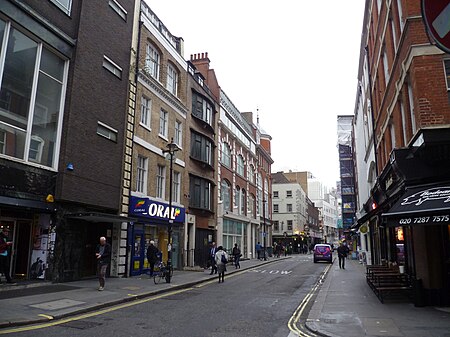Poland Street

Poland Street is a street in the Soho district of the City of Westminster, London. It runs from Oxford Street in the north to Broadwick Street in the south. It was named after the "King of Poland" pub, which was renamed in honour of Poland's King John III Sobieski in the heading of a coalition of western armies, crucially defeated the invading Ottoman forces at the 1683 Battle of Vienna. In the eighteenth century, Polish Protestants settled around Poland Street as religious refugees fleeing the Polish Counterreformation. It was the site of the St James Workhouse whose infirmary may have been the original St. James Infirmary (see plan). The lane that led into the workhouse in now the driveway to Q-Park Soho garage.
Excerpt from the Wikipedia article Poland Street (License: CC BY-SA 3.0, Authors, Images).Poland Street
Poland Street, London Soho
Geographical coordinates (GPS) Address Nearby Places Show on map
Geographical coordinates (GPS)
| Latitude | Longitude |
|---|---|
| N 51.515708333333 ° | E -0.13764444444444 ° |
Address
Poland Street
Poland Street
W1D 2JL London, Soho
England, United Kingdom
Open on Google Maps




